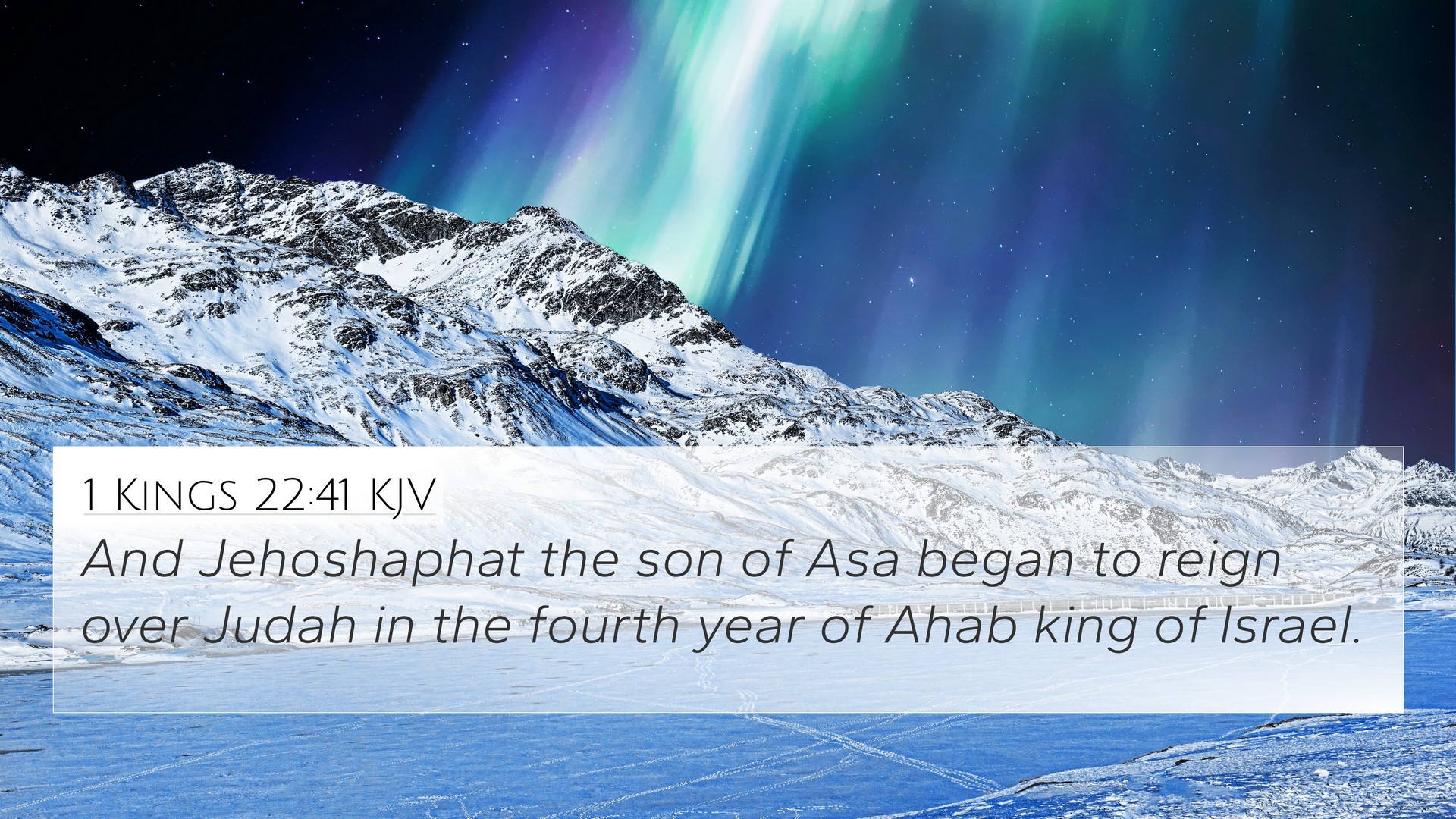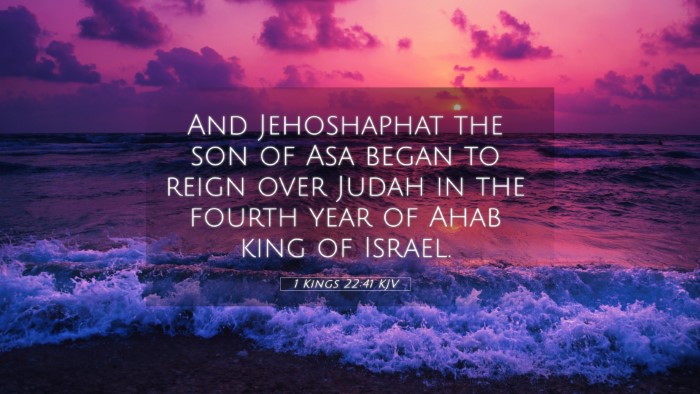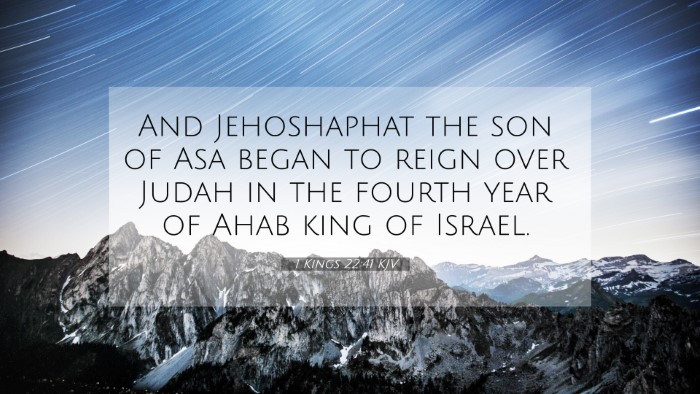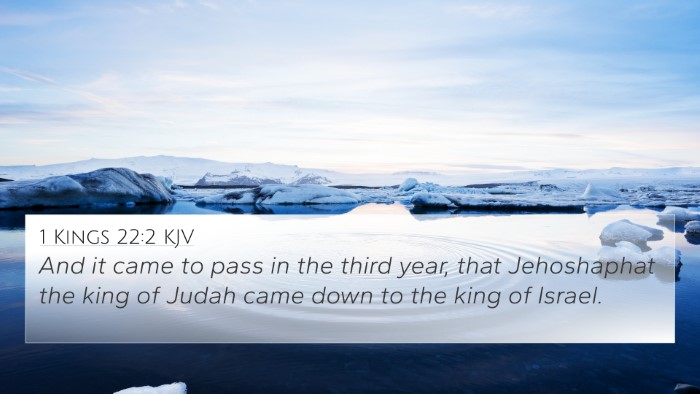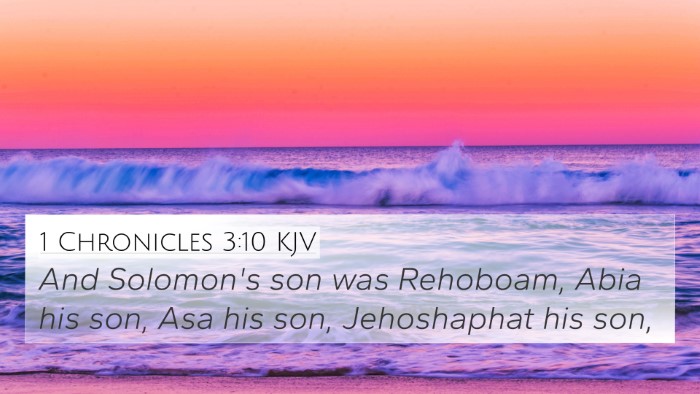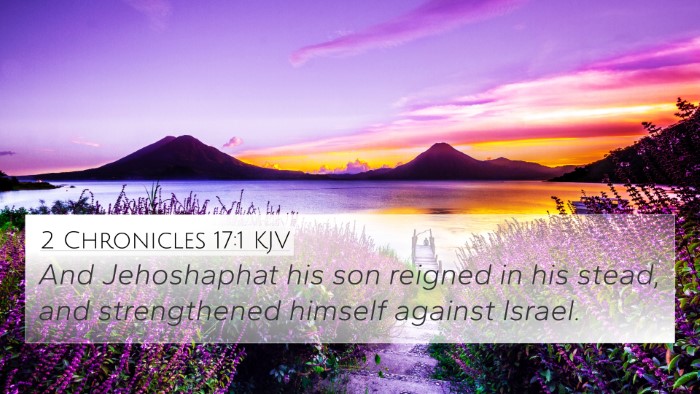Understanding 1 Kings 22:41
This verse marks a pivotal moment in the historical narrative of the kings of Israel and Judah. It serves as a summary statement of the reign of Jehoshaphat, king of Judah, and illustrates the interconnection of biblical history.
Verse Explanation
1 Kings 22:41: "And Jehoshaphat the son of Asa began to reign over Judah in the fourth year of Ahab king of Israel." This opening line sets the stage for understanding the context of Jehoshaphat's reign and his relationship with Ahab, the king of Israel.
Contextual Significance
This verse reveals several important themes:
- The Time of Reign: Jehoshaphat’s reign is positioned relative to Ahab’s leadership, showcasing the dynamics between the two kingdoms. Matthew Henry notes the importance of understanding the chronology of the kings for historical insight.
- The Political Alliances: Albert Barnes emphasizes that the interactions between Judah and Israel during this period were critical, as they set the stage for the eventual conflicts and alliances in the region.
- Spiritual Implications: Adam Clarke points out that Jehoshaphat’s reign represents a time of spiritual reform amidst political turmoil, providing a lesson on leadership in alignment with God’s will.
Thematic Connections
This verse connects to several significant themes and can be explored through the lens of various other scripture passages:
- Divine Sovereignty: 1 Chronicles 29:11-12 emphasizes God's rule over all the earth, highlighting how Jehoshaphat's reign fits within God's greater plan.
- Faithfulness in Leadership: 2 Chronicles 17:3-6 discusses Jehoshaphat’s commitment to seeking God, portraying him as a ruler committed to spiritual integrity.
- Warnings Against Alliances: 2 Corinthians 6:14 speaks to the caution against yoking together with unbelievers, resonating with Jehoshaphat’s eventual alliance with Ahab, which proved problematic.
Cross-References
Furthermore, this verse can be linked to various other biblical texts, providing a richer understanding through cross-referencing:
- 1 Kings 16:29-30 - Discusses the reign of Ahab, providing context for Jehoshaphat’s rule.
- 2 Chronicles 18 - Details the alliance between Jehoshaphat and Ahab, illustrating the complexities of their relationship.
- 1 Kings 22:1-5 - Illustrates the interactions between the two kingdoms during Jehoshaphat's reign.
- 2 Chronicles 20:1-30 - Describes how Jehoshaphat faces enemies, demonstrating his dependence on God for deliverance.
- Matthew 4:17 - Highlights the theme of turning from sin which aligns with the spiritual reforms Jehoshaphat initiates.
- Isaiah 7:1-2 - Provides background on the political landscape of the era which affected Jehoshaphat's decisions.
The Importance of Cross-Referencing
Using cross-references to connect passages can deeply enrich our understanding of biblical texts. Here are some key insights:
- Tools for Bible Cross-Referencing: Utilizing a bible concordance can help identify connections and enhance your study of scripture.
- Comparative Bible Verse Analysis: Analyzing verses in parallel helps uncover the underlying messages God is communicating through His word.
- Bible Cross-reference Guide: Engaging with a cross-reference Bible study can provide insights into how different scriptures interact with each other.
Conclusion
1 Kings 22:41 serves as a reminder of the historical and spiritual contexts of the kings of Judah. By connecting this verse to others within the Bible, believers can discover the profound interconnectedness of scripture and the ongoing narrative of God’s plans through history. The study of these connections aids not only in comprehension but also in application to our present-day lives as followers of Christ.
